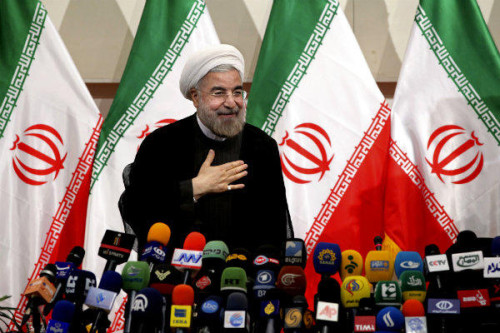Based on information from sources inside Iran, our analysis is that President Rouhani has backed away from his campaign promises to open up Iran’s political and social spheres — including freedom of the press — in return for the Supreme Leader’s support for nuclear negotiations.
Recent events, including the closure of Aseman newspaper and Culture Minister Ali Jannati’s retreat from his statement that he would free access to social media, have supported that analysis.
So does this interview with leading reformist Mashallah Shamsolvaezin with Al-Monitor:
Al-Monitor: During his campaign, Hassan Rouhani repeatedly promised freedom of speech and freedom of the press. Based on this platform, he galvanized massive support from reformists and those in favor of change. In your opinion, how well has President Rouhani met the expectations of Iranian journalists?
Shamsolvaezin: During his campaign, Mr. Rouhani promised to reopen the Association of Iranian Journalists, which was shut down following the 2009 protests, but that has not occurred yet….This association does not have the permit to be active.
Currently, Mr. Rouhani’s promise is stuck somewhere between three ministries: Labor, Intelligence and Culture. Mr. Rouhani avoids confronting the judiciary and has left the journalists defenseless and destitute.
Several weeks ago, 1,200 journalists wrote a letter to him, demanding that he would fulfill his campaign promises.
Al-Monitor: Rouhani’s platform is very different from (former President Mohammad) Khatami’s. President Khatami used a strategy known as the “pressure from the bottom, negotiations at the top”, meaning that he wanted to use the strengthening of civil society and the fostering of freedom of speech as leverage against conservatives to win concessions. However, Rouhani’s platform involves reducing tensions and engaging the moderates and conservatives alike.
Since Khatami’s strategy was a failure, he does not want to make the same mistake by antagonizing the conservatives. Instead, he wants to take small steps by making some concessions. Therefore, don’t you expect too much from Rouhani?
Shamsolvaezin: There is a significant difference between Mr. Khatami’s reformist platform and Mr. Rouhani’s; however, as six months has passed since the Rouhani administration’s takeover, there is a convergence between the two governments in the sense that both run the same branch of power, while nonelected bodies that are mostly conservative govern the other important and critical bases of power.
Therefore, Iranian conservatives are not confronted with a complete transfer of power because whenever the reformists control the executive branch, the conservatives use the judiciary to put consistent pressure on the reformists. On the other hand, when the conservatives run the executive branch and consolidate their power, the judiciary’s power is undermined.
This is the calculation that was pursued throughout the Khatami and (Mahmoud) Ahmadinejad administrations and has continued into the Rouhani administration. Actually, the Iranian conservatives have succeeded in obtaining a good formula for maintaining their power permanently. It seems that the Supreme Leader has come to terms with this idea as well.
However, let’s not forget that President Rouhani’s priorities differ from Khatami’s in the sense that Khatami was after comprehensive development, particularly political reform. But Rouhani has had to address economic and foreign policy because of Ahmadinejad’s wrong policies in those areas that had led to crises. Still, these crises weigh heavily on Mr. Rouhani’s shoulders, so he cannot introduce his own favored model.
Moreover, President Rouhani is neither prepared nor capable of going head-to-head with the conservatives. First, he understands their base of power very well. Second, he does not want to have Khatami’s fate. Finally, President Rouhani is well-positioned to confront the conservatives on two fronts: the economy and foreign policy. He knows well that he can defeat them in these key areas.

